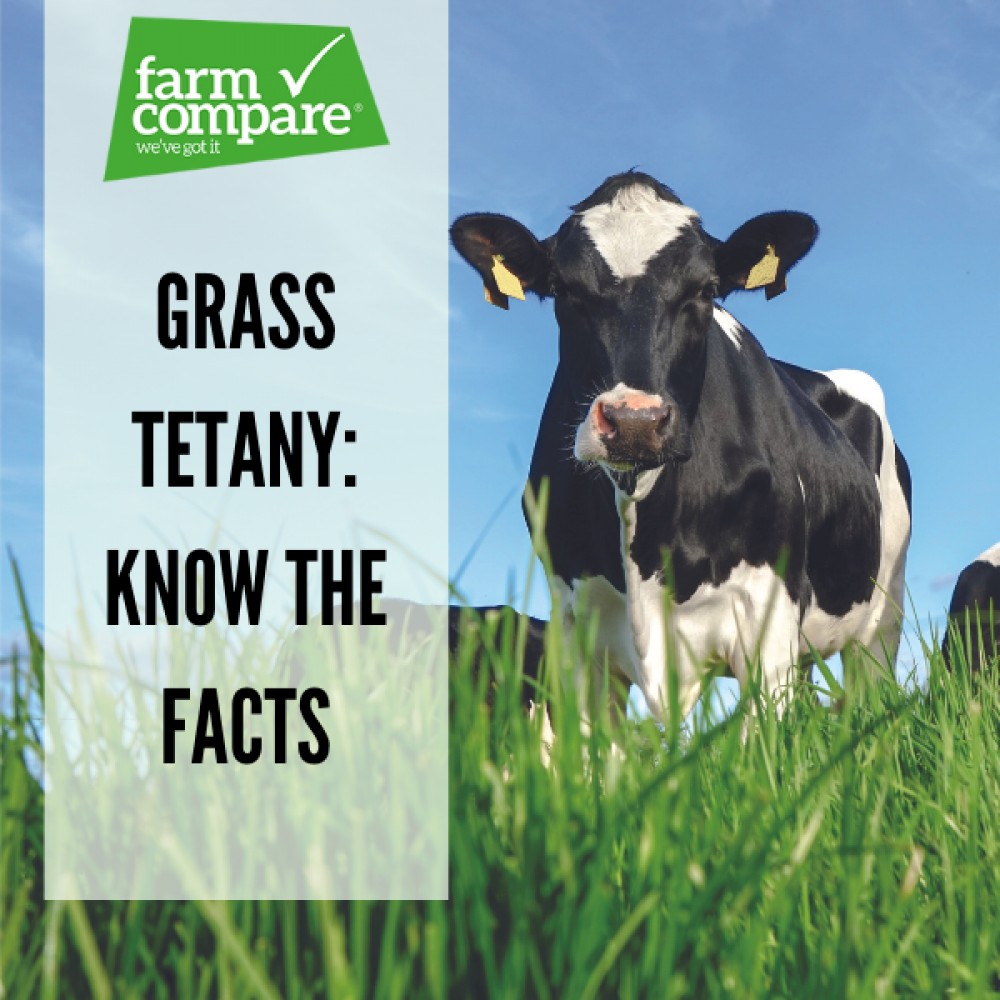Grass Tetany, know the facts

What is Grass Tetany in Cows?
Grass Tetany in cows, Hypomagnesemia is the technical term, is characterised by a subnormal level of magnesium in the blood. It is generally associated with grazing. Agri-Food and Biosciences Institute (AFBI) states that grass tetany continues to be a major cause of death in cows, particularly suckler cows, in Northern Ireland. It is caused by magnesium deficiency, which is common in lactating cows grazing lush spring pasture.
Symptoms of Grass Tetany in Cows
Typical symptoms of grass tetany in cows are reduced milk yield (up to 15% loss of production), nervousness and muscular tremors. In the acute form, the cow staggers around, froths at the mouth, collapses and dies.
Causes of Grass Tetany in Cows
► Magnesium deficiency
► Poor feeding intake
► Cold and wet weather
► Animal stress
► High potash (potassium) applications
Problems from Grass Tetany in Cows
► Reduced milk yield
► Nervousness and muscular tremors
► Grass tetany can be fatal
Grass Tetany – Treatment
An adequate amount of magnesium in a cow’s diet is essential to reducing Grass Tetany. While it’s evident that cows have magnesium in their bones, they can only mobilise this very slowly. Cows are typically poor at absorbing magnesium which means they require daily intakes of magnesium. Lactating animals during this season have an increased requirement for magnesium also. Anything that affects the gut function or DMI (dry matter intake) can disrupt magnesium absorption.
► Magnesium can be given through water. This is the most effective way of ensuring adequate mineral intake specifically suited to the needs of your herd. It is cost-effective and reduces the intensity of labour requirements.
► Mg in concentrates being added to feed – but be careful to allow for this when reducing meal in the diet.
► Magnesium boluses are an option that can be used but they only cover for 3 weeks. This is a labour-intensive method and care should be given if animals “cough up” bolus in the following 24hours.
► Palatable licks and high magnesium buckets.
► We can feed fibre in the diet during the spring to reduce the risk from lush spring grass high in oils and low in fibre. Most care should be taken when lush low covers are being grazed in particular.
► Pasture dusting magnesium can be done also but is very labour intensive.
► AFBI advises magnesium supplementation of the water supply is effective when water intake from troughs is high.
The magnesium content of pastures may be increased by applying magnesia limestone (dolomite), when liming is required. However, the effectiveness of this method depends on the soil type, being most effective on light sandy soils, according to AFBI.
Adequate control measures need to be fully implemented, particularly during the high-risk periods associated with stressful weather conditions. Remember that the value of even one cow lost from Tetany may cover the cost of years of prevention/protection for that herd! (Teagasc)
© 2025 Farm Compare Ltd. All rights reserved| T&Cs | Privacy policy | Website by Reflex Studios

This website was developed with support from Priority 6 (LEADER) of the Northern Ireland Rural Development Programme 2014-2020 by the Department of Agriculture, Environment and Rural Affairs and the European Agricultural Fund for Rural Development: Europe investing in rural areas

